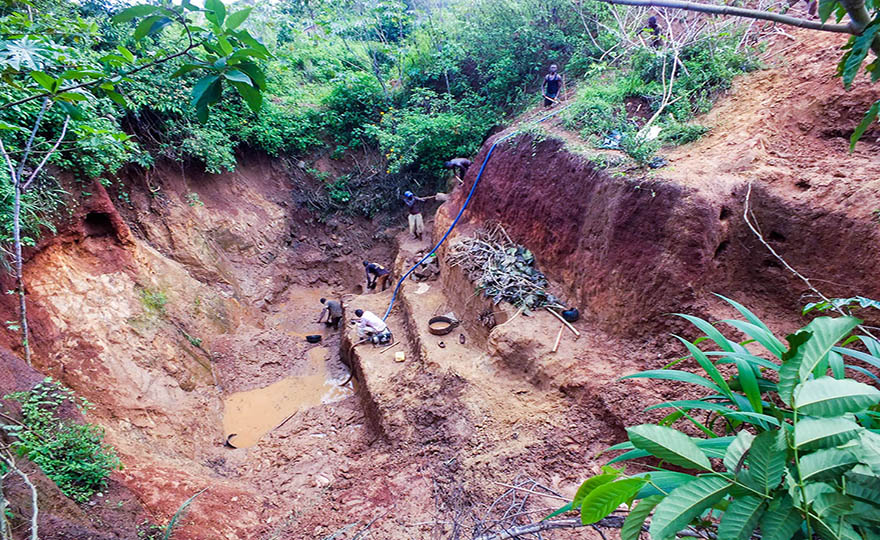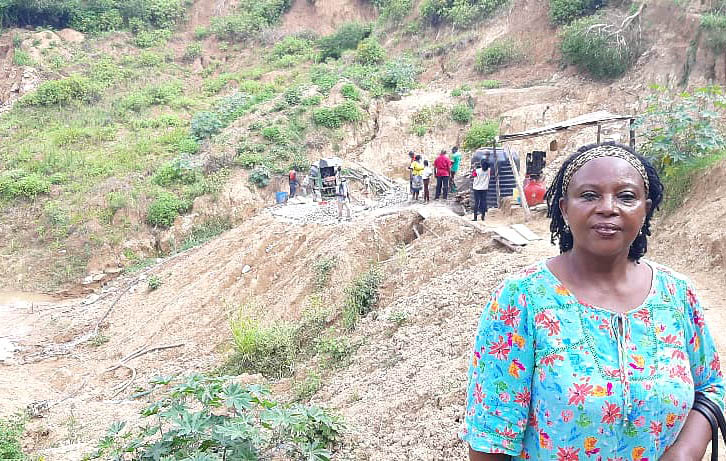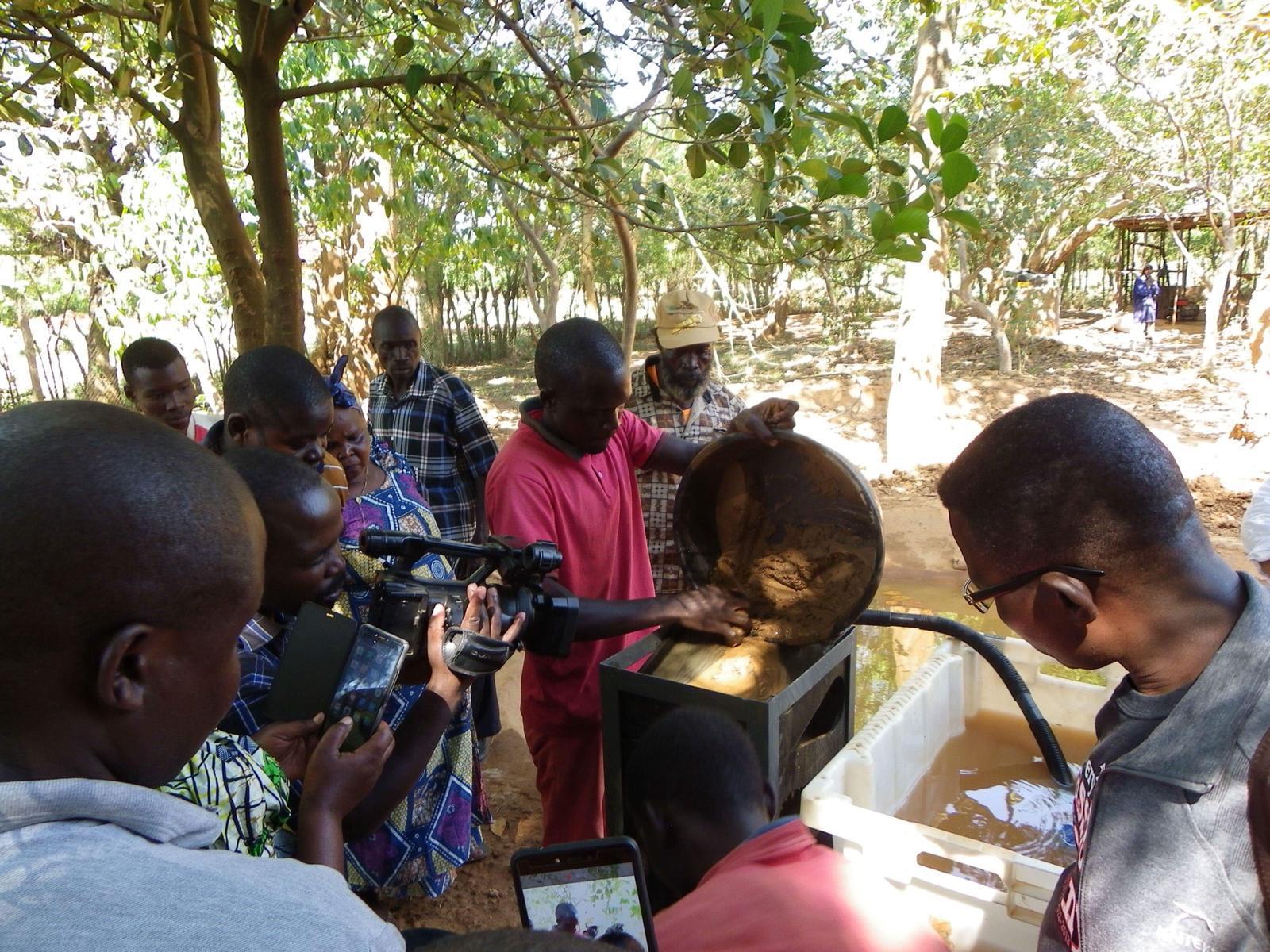Uphill struggle for small-scale miners in Africa

Artisinal and small-scale mining site in Busia, Uganda. Photo: EWAD
Small-scale mining is a fundamental livelihood for many poor people in Africa. But it is dangerous work and bad for the environment. A NAI research project investigates whether transformations to sustainability can arise in small-scale gold extraction.
Small-scale extraction occupies many millions of people around the world. The World Bank estimates that 44 million people directly, and 134 million indirectly, are dependent on artisanal and small-scale mining – half of them involved in gold-mining. Around 90 percent of all employment in gold-mining is based on small-scale extraction.
The Gold Matters research project explores whether a transformative approach to sustainability is possible in artisanal and small-scale gold mining. Despite its economic significance, providing livelihoods for millions of people, small-scale mining is often associated with negative impacts on the environment, society and health. Exploitative child labour is common, too.
“The research highlights the challenges facing miners in African countries, where mining governance is weak and works against them”, says project leader and head of research at NAI, Eleanor Fisher.

EWAD Director Margaret Tuhumwire in front of a mining site. Photo: EWAD
In Uganda, it is estimated that small-scale mining employs 190,000 people, compared to 2,000 in industrial mining. Environmental Women in Action for Development (EWAD) is an NGO that since 2012 has been working with artisanal and small-scale mining organisations in the district of Busia, in eastern Uganda, on the border with Kenya. EWAD supports gold miners to develop their operations by gaining formal mineral rights and making production more efficient with improved technology.
“After taking some of the miners to Tanzania to share experiences with colleagues there, they now have mines with terraces, as well as building timber scaffolding in the pits to prevent the walls from falling down”, EWAD Director Margaret Tuhumwire explains.

Richard Kidega demonstrating on use of the Konka. Photo: EWAD
In gold processing, it is common to mix mercury with gold-bearing materials to form an amalgam. When the amalgam is heated, the mercury vaporises and pure gold nuggets remain. However, mercury fumes are highly toxic. EWAD has helped introduce appropriate technologies – the GoldKacha and GoldKonka – that improve gold recovery rates and help eliminate mercury use. Moreover, the use of retorts that keep mercury enclosed and allow it to be reused is saving the miners money.
Small-scale miners struggle for official recognition. National planning tends to promote industrial mining while dismissing small-scale mining, despite its vital contribution to local economies. In the absence of adequate state support, organisations like EWAD are crucial, according to Fisher.

Eleanor Fisher.
“They are the gatekeepers that can develop mining in more sustainable ways. They also support miners to create associations with legal status. The miners often lack the know-how of formal procedures and seldom have networks in state departments”, Fisher remarks.
Having formal mineral rights can help secure mining livelihoods and provide access to credit. But it is not easy to get a licence.
“Facing governmental officers in the capital can be intimidating for the miners, and requires much paperwork and some money, too. We give them support to access the much-needed services from ministries and departments”, Tuhumwire notes.
Government approaches to artisanal and small-scale mining in African countries are changing. Before, it was often illegal. But now, new policies and legislation provide instruments for formalisation. However, Fisher points out, even though this means legal access to mining rights, many people remain informal.
“Unsurprisingly, governments favour those who form groups, are literate, have capital and can complete licensing procedures. At the same time, those working as mine labourers, in processing, service provision and petty trade are left out completely. The absence of wider planning reinforces inequality in a sector with so much potential for employment”, Fisher concludes.
TEXT: Johan Sävström
Gold Matters
The research project External link, opens in new window. explores whether transformations to sustainability are feasible in artisanal and small-scale gold-mining, deploying a multi-actor and trans-regional approach with comparative analysis across sites in South America (Brazil, French Guiana and Suriname) and Sub-Saharan Africa (Burkina Faso, Ghana, Guinea and Uganda).
External link, opens in new window. explores whether transformations to sustainability are feasible in artisanal and small-scale gold-mining, deploying a multi-actor and trans-regional approach with comparative analysis across sites in South America (Brazil, French Guiana and Suriname) and Sub-Saharan Africa (Burkina Faso, Ghana, Guinea and Uganda).
Child labour in Uganda
According to the Uganda National Household Survey 2016/2017, more than 2 million children were engaged in child labour. Poverty, the impact of HIV/AIDS, high costs of education, conflict and now also the impact of Covid-19 are all contributing factors to child labour in Uganda. In the highly unmechanised mining sector, children are doing hazardous work such as crushing ore, digging pits and processing gold. EWAD External link, opens in new window. is working towards creating child labour-free zones in the district of Busia and has established motivational centres where children are helped to transition from child labour to formal education and vocational training.
External link, opens in new window. is working towards creating child labour-free zones in the district of Busia and has established motivational centres where children are helped to transition from child labour to formal education and vocational training.
